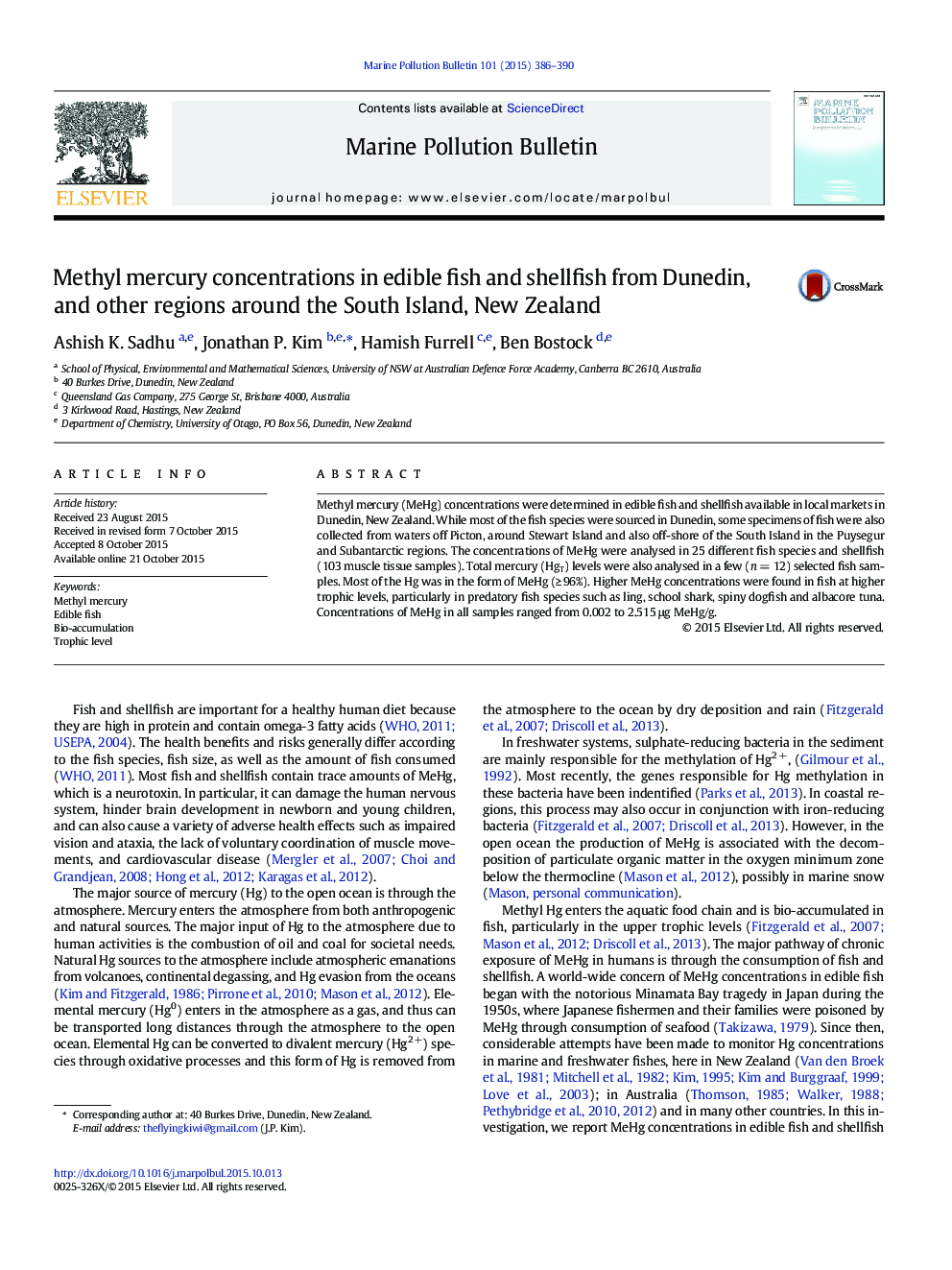| Article ID | Journal | Published Year | Pages | File Type |
|---|---|---|---|---|
| 4476625 | Marine Pollution Bulletin | 2015 | 5 Pages |
•Methyl mercury was determined in edible fish from the South Island, New Zealand.•It ranged from 0.002 to 2.515 μg methyl mercury per gramme of fish.•Methyl mercury is the dominant chemical species in fish muscle tissue.•Fish at higher trophic levels have elevated MeHg concentrations.•Some ling, spiny dogfish, and school shark have MeHg levels > 1 μg MeHg/g.
Methyl mercury (MeHg) concentrations were determined in edible fish and shellfish available in local markets in Dunedin, New Zealand. While most of the fish species were sourced in Dunedin, some specimens of fish were also collected from waters off Picton, around Stewart Island and also off-shore of the South Island in the Puysegur and Subantarctic regions. The concentrations of MeHg were analysed in 25 different fish species and shellfish (103 muscle tissue samples). Total mercury (HgT) levels were also analysed in a few (n = 12) selected fish samples. Most of the Hg was in the form of MeHg (≥ 96%). Higher MeHg concentrations were found in fish at higher trophic levels, particularly in predatory fish species such as ling, school shark, spiny dogfish and albacore tuna. Concentrations of MeHg in all samples ranged from 0.002 to 2.515 μg MeHg/g.
